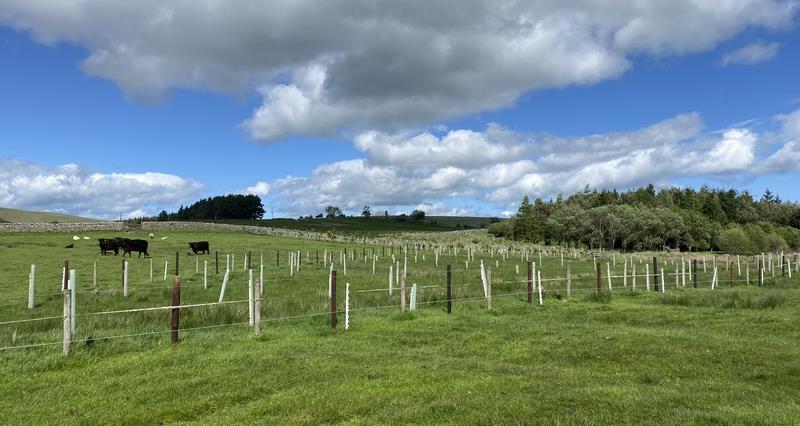How can I claim the offer?
Use the links below to navigate to what's on offer in your region.
For more information on other tree planting schemes and funding, visit: Tree planting information for farmers
Key considerations when planting trees
Before ordering your pack, think about where these trees will go and consider:
Ownership
It is essential that you have permission from the legal landowner to plant trees.
Services
Shrubs may be acceptable when spaced 3 metres away from overhead powerlines but avoid smaller and larger trees. Underground services are best left un-planted unless the service provider or your agreement with them permits it.
Archaeology
Tree roots break up archaeological deposits. Even when trees are already growing on archaeology it is not advised to introduce new trees.
You are likely to know if your farm has a designated heritage asset (Scheduled Ancient Monument, Registered Park and Garden etc). Such sites are shown on magic.defra.gov.uk, so you can check if you are unsure. All known archaeology should be avoided when tree planting.
Lynchets, ridge and furrow, burial grounds, forts and woodbanks are commonly found on farms and most likely are not shown on magic.defra.gov.uk. We recommend checking your Local Authority Historic Environment Records online database.
Valuable habitats and features
Avoid changing conditions on semi-natural habitats like unimproved or semi-improved grasslands.
Features like mature open grown trees, beetle banks, bat roosts and sites associate with ground nesting farm birds could easily be adversely impacted by tree planting and are best avoided. Look up your farm on Defra's Magic Map for habitats and species that may impact on your planting plans.
Impacts
By planting the right tree in the right place you can avoid damaging drains, buildings and creating a future tree safety issue. Think about the future impacts on views, TV signals, safety and infrastructure both on your land and any neighbours that may be affected.
Protected Habitats
You likely will already know if your land is within or bordering land that has restrictions on it in the form of various designations and the associated legislation. You can double check if you are unsure by using Defra's Magic Map, navigating to your planting site and turning on all the layers under the “designations” category.
Planting Style:
- Regardless of the size of your plans it is best to plant the same species of tree/shrub in groups, ideally of 15 to 40 in size (shrubs can be at the smaller end of that range and tree species from the middle to the larger end).
- Shrubs grow best around the edges of plantations where they visually soften the edge, provide shelter, add colour and habitat variety, and don’t get over-topped by taller growing trees.
- Closely spaced trees compete for light and grow taller and straighter. They will concentrate their growth in the stem of the tree and have less branch material. More widely spaced trees grow out as well as up and are generally better for conservation. The UK has a wide range of insects, fungi and lichen that are associated specifically with open grown trees. The loss of ash field trees is potentially devastating for such species, especially as many of them turned to ash when we lost our elms as the bark is a similar pH.
- Give space to existing trees and hedges. An open grown field or hedge tree will be adversely affected by a plantation that grows up to be touching or shading its crown. The habitat value of hedges will degrade if they are over topped by a plantation.
- Planting woodland where it links, extends or buffers existing woodland really helps safeguard woodland habitats.

